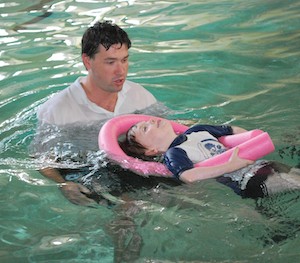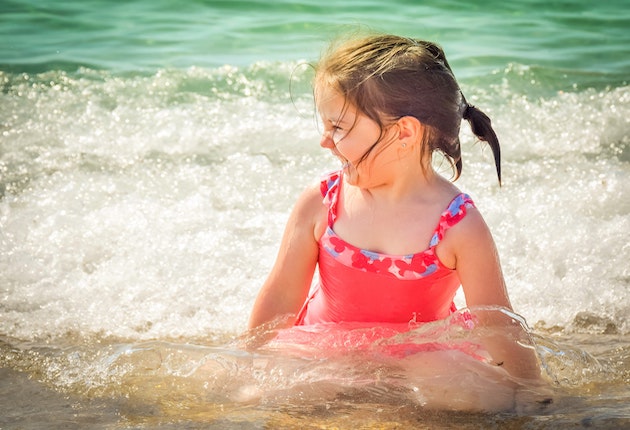Doing baby swimming classes is part of modern parenting in the 21 century. With scientific evidence confirming many benefits of baby swimming, communication and reading the ‘needs’ and ‘wants’ of a non-verbal child in the swimming pool enviroument could be a puzzle for many specially new parents. Although our ability to communicate with words makes us unique, it takes a few years for children to master a language and use words accurately for self-expression.
With no verbal skills, babies can only use body language to communicate their emotions and needs to their parents and those around them.Body language is the unspoken part of our communication and it remains important throughout our lives.
Language expertsseem to agree that between 50-80% of all human communications are non-verbal.

Body language is nonverbal communication in which physical movements and gestures as opposed to words, are used to express or convey the information. This includes facial expressions, body posture, eye movement, touch and the use of space.
Children communicate far more to adults through their body language and children’s body language speaks much louder than their words. In young children who have no or a very limited verbal skills, body language is their main or sole method of communication.
Our brain controls all our physical movements as well as all the faces and gestures that we make. Adults have control over their bodies and the kinds of messages that they send out. So, as a parent, you need to be mindful of your own body language in the same way that you have to watch what your child says with her body language.
A calm touch and gentle holds are signs of confidence and trust. When children feel secure, they also show that with closeness and relaxed facial expressions.
A confident child:
In our baby and toddler swimming classes, we encourage our parents to hold their little ones (babies and toddlers) very close to your chests when they are in water. Why?
Skin-to-skin contact promotes secure attachments in children. Plus, holding your baby close to your chest in the water, communicates your emotions to them, just as your child can communicate his/her feelings to you.
Children and parents communicate their happiness and calm with faces, voices and touches.
When children are clingy in water, normally, it’s a sign that they are not confident, so parents and swim teachers must provide extra assurances.
If your baby or toddler gets clingy in the water, here are some useful tips:
Water should bring joy and happiness to you and your child and when babies starts associating positive feelings (like being safe) with water, they keep enjoy their swimming time. Unfortunately, any negative feelings formed in childhood can last a lifetime.
 As a parent, you can really help your baby to be a happy and confident swimmer one day if you work together and keep the communication going. Seeing your child turning to be a confident swimmer is priceless. Be mindful, your baby needs to get the security coming from you (the parent) at the first place.
As a parent, you can really help your baby to be a happy and confident swimmer one day if you work together and keep the communication going. Seeing your child turning to be a confident swimmer is priceless. Be mindful, your baby needs to get the security coming from you (the parent) at the first place.
It takes time, energy and patience to build a trusting relationship with water but, trust me, your investment will pay off. Just trust the process and stay communicative!
On Saturdays, we offer toddler swimming classes in Wimbledon

